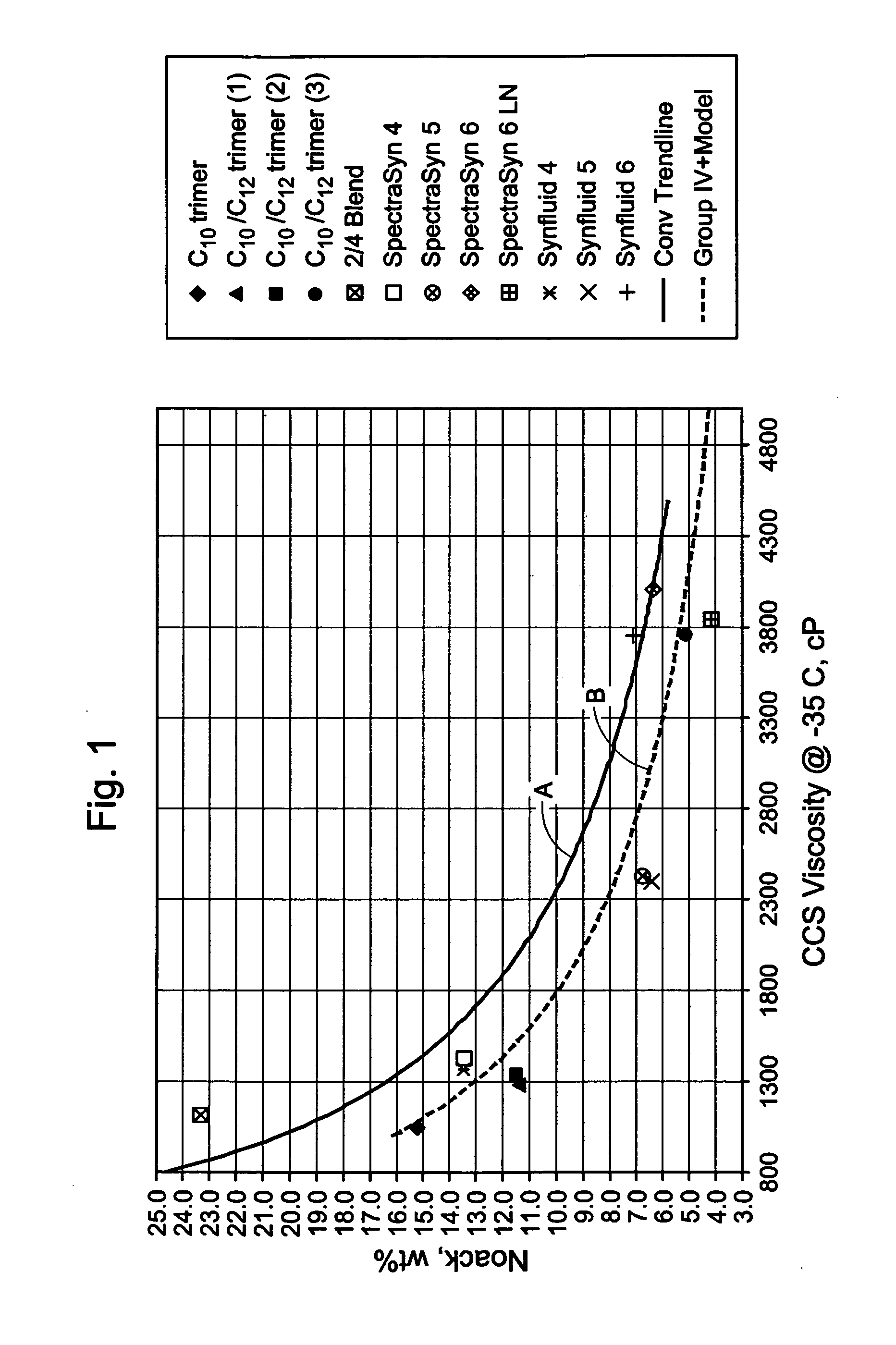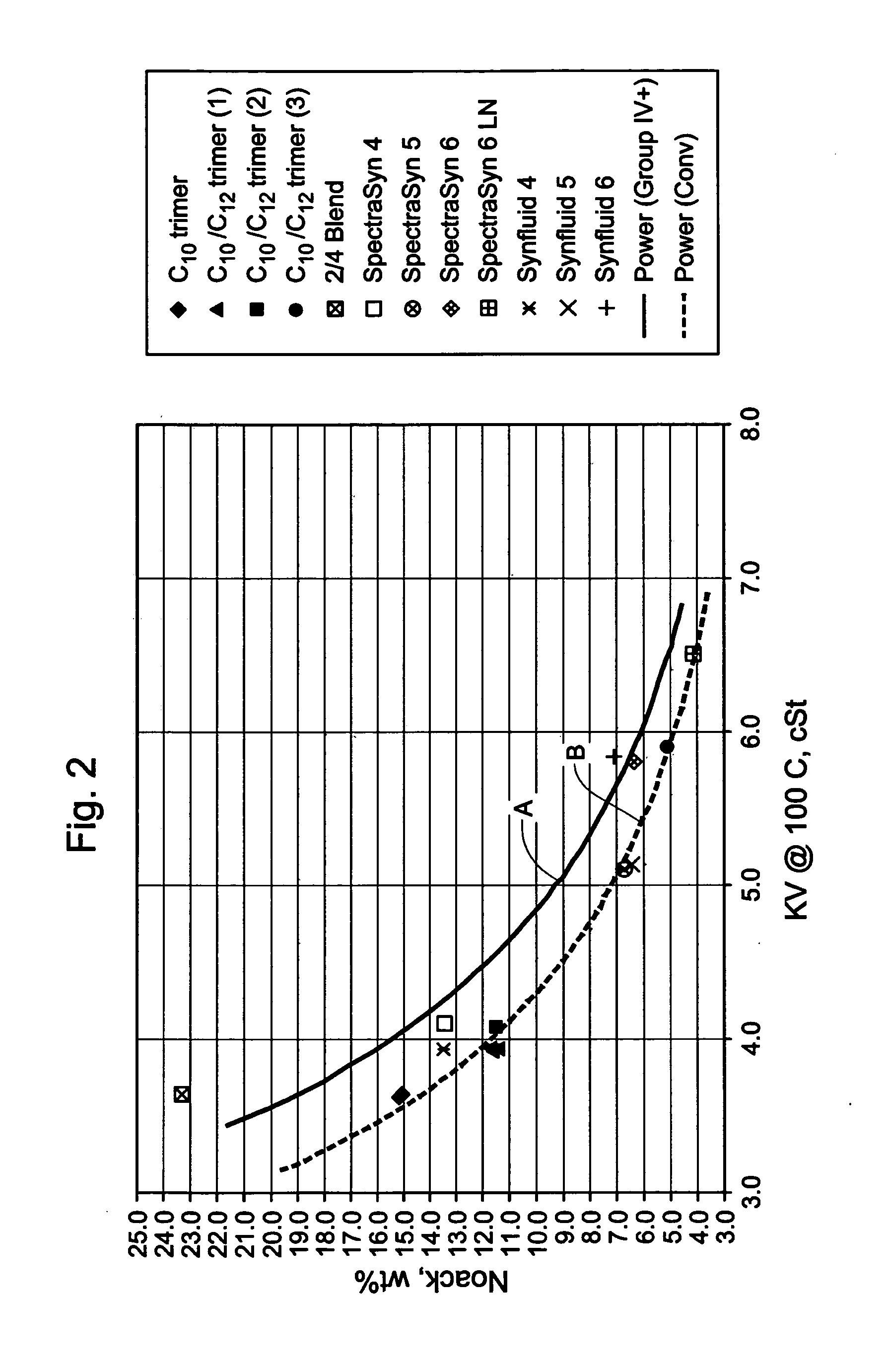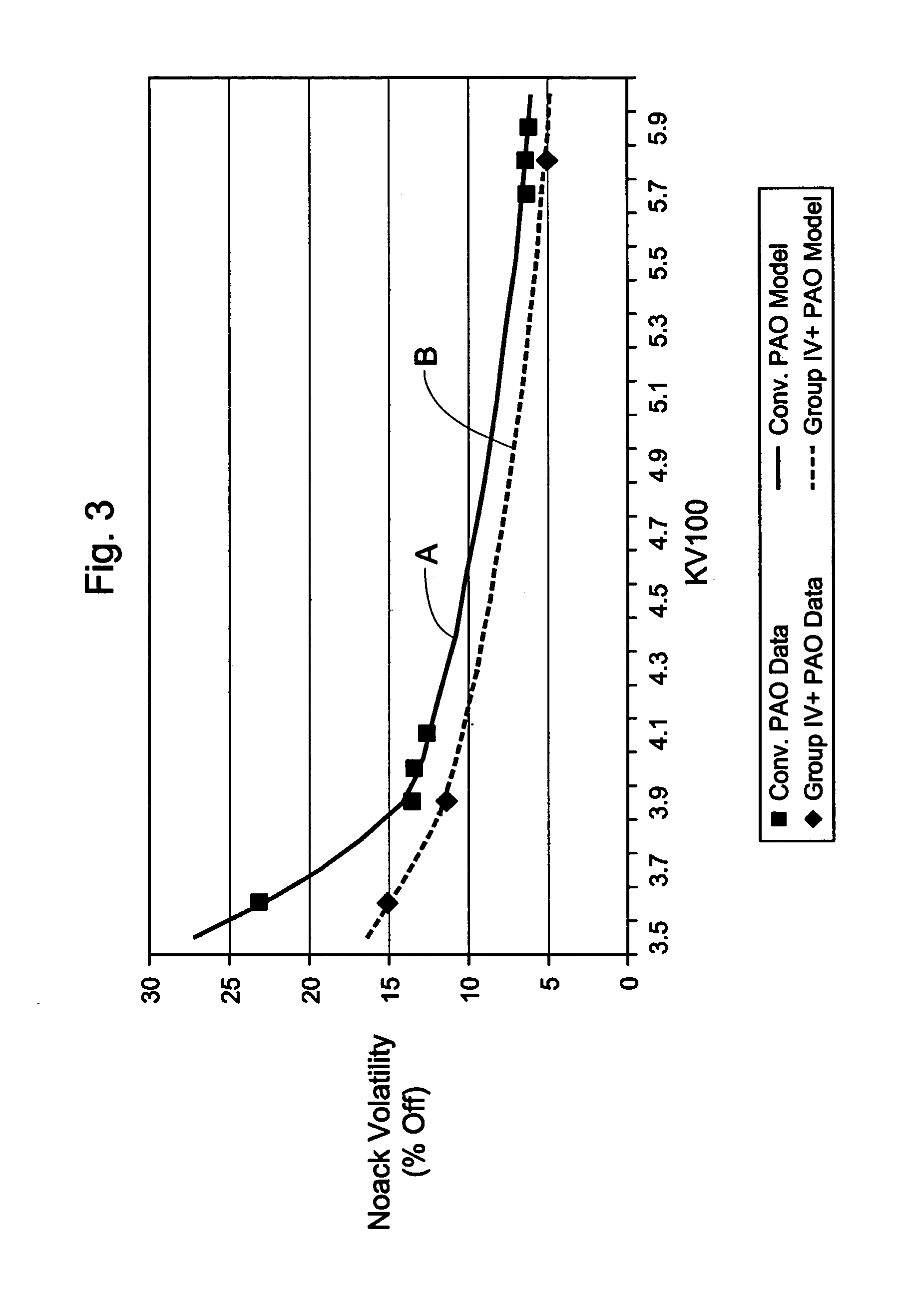Blend comprising group II and group IV basestocks
a technology of basestocks and blends, which is applied in the direction of lubricant compositions, organic chemistry, fuels, etc., can solve the problems of limited supply of both of these relatively expensive basestocks, and achieve low kinematic viscosity, low noack volatility, and low pour point
- Summary
- Abstract
- Description
- Claims
- Application Information
AI Technical Summary
Benefits of technology
Problems solved by technology
Method used
Image
Examples
example 1
Comparative
[0058] 1-decene was oligomerized in two continuous stirred-tank reactors in series at 18° C. and 5 psig using a feed consisting essentially of olefin, BF3 and BF3.butanol (complex of the catalyst and the alcohol). The free BF3 concentration was 0.1 wt. % (1.8 mmoles / 100 parts olefin feed); the weight ratio of BF3 to BF3.alcohol complex in the feed was 0.2:1. Residence times in the primary and secondary reactors were 1.4 hrs and 1 hr, respectively. When the system reached steady-state, a sample was taken from the second reactor and the composition of the crude polymer was determined by gas chromatography (GC). The % conversion and QI, shown in Table 1, were computed from the GC results. The QI obtained was 0.375, meaning that only 37.5% of the mixture of oligomers (trimers and higher) were trimers.
example 2
[0059] As Example 1, except that the promoter system had BF3 butanol and BF3.butyl acetate and the residence times in the primary and secondary reactors were 0.5 hr and 1.3 hrs, respectively. The mole ratio of butanol to butyl acetate was 7 to 1; the weight ratio of free to complexed BF3 is 0.1:1. With the addition of BF3 butyl acetate in the promoter system, the conversion was lower and more trimers were produced as indicated by the higher QI of Example 2 compared to that of Example 1, as shown in Table 1.
example 3
[0060] Same as Example 2, except that the concentration of the BF3 butyl acetate complex was increased so that the promoter system had a BF3 butanol: BF3 butyl acetate ratio of 4:1; the weight ratio of free to complexed BF3 was 0.08:1. With the incorporation of more acetate in the promoter system, conversion is similar to that in Example 2, while the QI of the polymer, also shown in Table 1, is increased to 0.651.
PUM
| Property | Measurement | Unit |
|---|---|---|
| weight percent | aaaaa | aaaaa |
| weight percent | aaaaa | aaaaa |
| pour point | aaaaa | aaaaa |
Abstract
Description
Claims
Application Information
 Login to View More
Login to View More - R&D
- Intellectual Property
- Life Sciences
- Materials
- Tech Scout
- Unparalleled Data Quality
- Higher Quality Content
- 60% Fewer Hallucinations
Browse by: Latest US Patents, China's latest patents, Technical Efficacy Thesaurus, Application Domain, Technology Topic, Popular Technical Reports.
© 2025 PatSnap. All rights reserved.Legal|Privacy policy|Modern Slavery Act Transparency Statement|Sitemap|About US| Contact US: help@patsnap.com



